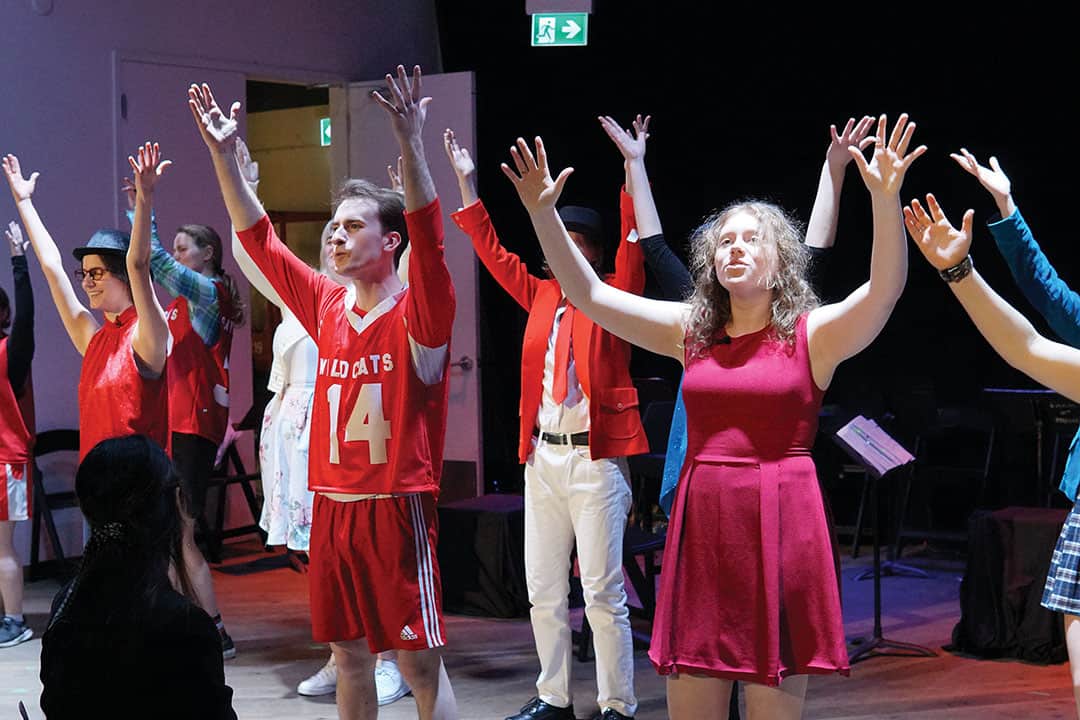As a person who’s watched High School Musical about a thousand times, I was ecstatic to attend Victoria College Drama Society’s (VCDS) take on the show on March 19. The production, performed at Toronto’s Artscape Sandbox, promised to be performed “concert-style.”
Although I knew I wouldn’t be presented with new material, I had many questions about what to expect. How would High School Musical’s plot be connected if the VCDS would only be singing? Would the actors sing every song, or only the most popular ones? These questions were buzzing through my mind as I entered the show’s venue.
I was greeted by a large room with a high ceiling. Audience members frantically searched for the closest seat and studied the stage’s preassembled decorations. This high energy dynamic helped build my anticipation for the beginning of the show.
The director of the production, Paul Meyer, first went onstage to introduce the performance. After the lights dimmed, Sharpay Evans — portrayed by Siobhán Gyulay — was the first cast member to appear. Gyulay, one of the standouts of the show, commanded the stage presence of a star; her voice was unwavering, animated, and contained a confidence that Evans would be proud of. Her character paired delightfully with Anna-Maria Maleshev’s portrayal of Ryan Evans, who offered animated facial expression and timely reactions.
Speaking of pairs, a large part of the show’s success can be attributed to powerful performances by Callan Murphy and Kathleen Kovacs, who played Troy Bolton and Gabriella Montez, respectively. Murphy and Kovac’s emotional duets transported me back to watching the first High School Musical movie for the first time. The actors also displayed a captivating chemistry, supported by the cast’s energy while listening to them sing.
However, any musical fan knows a show’s success cannot only be attributed to its main actors. In the middle of the show, I whispered to my friend, “The voices of those two supporting actors are incredible.”
“Yes, they are,” was her immediate response. Throughout the production, not one singer missed their cue; it was preparation like this that made the show fabulous.
Of course, no production goes without difficulties and emergencies. The first aspect of the venue that I noticed was its lack of stage space — a crucial factor with regards to accessibility for cast and production members. However, the VCDS efficiently managed the lack of space by staging props and lighting at the corners of the stage, so it was easy to navigate blocking changes during the show.
After the production, I found out that one of its cast members was unable to perform on the day of the show due to a personal emergency. This was the moment when the VCDS truly demonstrated its creativity; the society recorded the cast member’s voice ahead of the production to play during the live show. In my opinion, this was one of the special details that immersed the audience: a window into the almost forgotten high school experience of hearing faculty speak into the school’s PA system. Over the course of the production, audience members were treated to hilarious wordplay that aided the show in running more smoothly.
During VCDS’ concert, I was unable to sit still — the energy of the performers was contagious and encouraged me to sing along. My last memory from the show — when the audience stood on their feet to sing the production’s last song, “We’re All In This Together” — was truly a testament to the show’s success.


